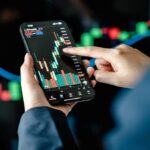Contracts for Difference, or CFDs, are becoming very popular in trading. This financial instrument lets the person speculate on the movement of price of any given asset without owning the asset itself. The attraction towards CFDs is its flexibility and high returns; however, they also come with risks that every trader should be aware of before making an investment.
Probably one of the main challenges of CFDs trading is the aspect of leverage. Leverage enables one to control a big position using a relatively small investment. While this magnifies profits, it also magnifies losses. This means a small market movement in the wrong direction may wipe out your entire investment. As such, there is always a need to be very cautious, more so among those who are new in share CFDs trading, since over-leverage is very difficult to avoid. Using tools for risk management, like stop-loss orders, prevents unlimited potential losses; however, no tool is fool proof.
The next thing is that of market volatility. Of course, the financial market can be quite unpredictable as well. Trading of CFD isn’t exempt to this rule. At a time of fluctuation, the prices may show some dramatic movements. If this level of volatility isn’t taken into proper consideration, then it could go negative for the trader. Proper knowledge and timing can play a crucial role in overcoming the effects which sometimes occur during the sudden alteration of market conditions.
The complexity of the CFD itself is also a cause for concern. For anyone that is to enter share CFD trading, knowledge of what this instrument does would be important. Unlike many other investments, CFDs have a series of costs attached to it, from the spread to the overnight finance cost and also commissions charged. These costs can actually eat into the profit being made, therefore making gains impossible or very hard. Before putting any trade into consideration, consider reading the terms and conditions supplied by the broker.
Speaking of brokers, another critical aspect of risk management has to do with your role as the broker. The brokers are not all the same; some of them operate shoddy practices. It’s smart to research and settle for a reputable and regulated broker. Levels of customer support, reliability, and transparency are necessary to check. A good broker will arm you with the right tools and resources to make conscious, informed decisions, while a bad one can put your investment at risk without cause.
Another hidden danger is emotional trading. The two most common emotions that alter judgment and cause people to make impulsive decisions are fear and greed. Such examples include holding on to a losing position in the hope that the market will turn for you or overtrading after a winning streak that leads to big losses. A well-thought-out trading plan combined with discipline will help you navigate all these emotional pitfalls.
Lastly, never forget that trading CFDs is not for everybody. It demands a great amount of risk tolerance and commitment towards continuous learning and, most importantly, the ability to bear losses. Considering the risks of CFD and being cautious and disciplined throughout your strategy will allow you to trade with comfort and minimal setbacks.

